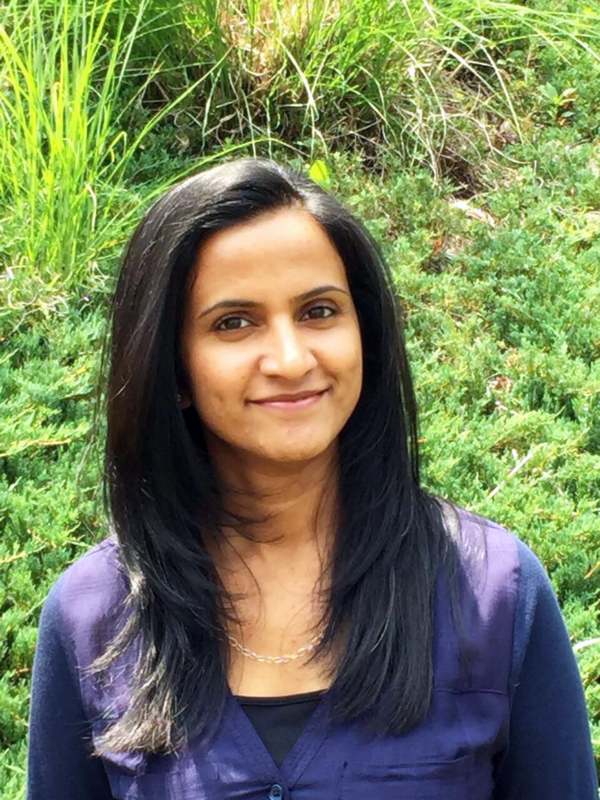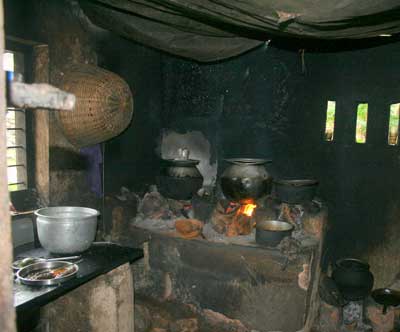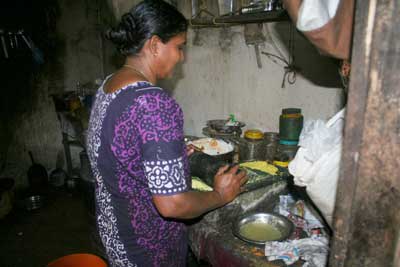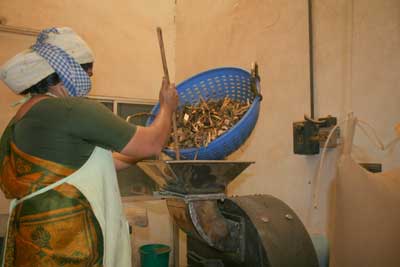Epigraph Vol. 17 Issue 3, Fall 2015
Marriage and Epilepsy: Struggles of Women Living with Epilepsy in Kerala, South India

The psychosocial burden associated with the stigma of living with epilepsy can be a bigger hurdle than the disease itself. Many studies from developing countries that have looked at the burden of stigma have shown the struggles that people living with epilepsy face, particularly women living with epilepsy.
I recently conducted an ethnographic study on epilepsy, its psychosocial consequences and its treatment gap among women in the outskirts of Kozhikode district of Kerala, South India. These are women who were identified as receiving treatment from traditional healers and who were either not on any AEDs or receiving AEDs intermittently. The study describes their daily lives; their thoughts and perceptions about epilepsy; and their customs, traditions and beliefs regarding the disease. Spending a maximum of two weeks' time with each participant, data were collected through in-depth interviews, participant observation and field notes.
Potential participants were identified from local traditional healers' consultation areas, and through word of mouth. One of the problems encountered in the conduct of this study was that I came to be recognized as the “epilepsy lady” by the women I contacted, even though I dressed traditionally while conducting the study and spoke Malayalam with native fluency.
For this reason, of the 21 potential participants identified, in spite of assured confidentiality, 8 women of marriage age or their families refused to allow the women to be part of an '"epilepsy" study for fear of being recognized by the community as someone with epilepsy and for fear of disadvantages in marriage negotiation. Comments from these potential participants included: “Can't we talk over the phone? If you come here, neighbors will enquire … they will come to know [about her epilepsy]…” “There is nothing I want to talk [to anyone] regarding this disease…” In a mother's words regarding her daughter who has epilepsy: “After waiting long, people have started approaching us with marriage proposals for her. If she is participating [in the study], she may stay at home forever [without getting married].”

Six women eventually enrolled and completed the study. The general belief in the community about epilepsy was that it was caused by certain supernatural forces, including possession by evil spirits, casting of spells by someone else or curse of God. Although the initial treatment sought was allopathic medications (AEDs), eventually the women transitioned to traditional medicines. All participants, irrespective of their religious beliefs and faith, had conducted rituals, prayers, and offerings as suggested by the faith healers as well as those that were in accordance with their convictions.
The story of two of those women and their struggles with marriage and marriage negotiations are illustrative of the many issues associated with marriage in women with epilepsy.
Ms. Sudha was a 45 year old unemployed woman with elementary school education. Her first seizure was in a bus when she was 13 years old. Along with many changes these seizures brought to her life, the biggest was the termination of all her education options. When she was 15, her parents, who were illiterate, started worrying about finding an appropriate bridegroom for her. They concealed the history of her epilepsy and married her to an already married man much older than she. She continued living with her parents because they considered her to be their responsibility and her husband visited her a few days every week.
Nine years later, upon witnessing a seizure, her husband felt cheated and blamed the partic

ipant and her family. He took his wife to a neurologist in the city for treatment but later divorced her. She brought up her two daughters while depending on the rest of her family for financial support and the charity from well-wishers in her community. Her lamentations of living with the disease continued when she found that her disease was also affecting marriage negotiations for her daughters. She has tried different types of treatments for her epilepsy and is currently on AEDs, though not on prescribed dosage due to financial constraints and side-effects of the medications. Obtaining AEDs requires that she travel approximately 2 hours each way with the further cost of doctor's fees and transportation. She also has to plan to purchase the medications during this visit because the pharmacy in the neighborhood village does not sell the medicines she needs.

Ms Girija is a 29 year old woman with graduate education holding a clerical job in a local shoe company. She is the mother of a two year old child. She has nocturnal seizures and describes them as catamenial in pattern. Like other participants, she has undergone many types of treatments for her seizures. Her family took her to a hospital when she had her first seizure and she was started on AEDs. Immediately after this, her grandfather, who did black magic, conducted rituals and gave her an amulet to wear around her waist. At the time of the interview, she was on treatment from the traditional healer who was slowly weaning her off the AEDs and increasing the dose of traditional medicine.
Concealing her history of epilepsy, her parents got her married three years ago. She had seizure reduction around the time of her marriage and thought itappropriate to conceal her epilepsy from her fiancé then. However, her husband came to know about her disease when he enquired in the pharmacy about the purpose of the medication she was taking and later witnessed one of her seizures. He felt cheated and blamed her family for concealing her epilepsy from him. He started behaving differently, consuming alcohol and emotionally abusing her. His words to her were: “You have this disease, your family cheated me, and so now, whatever I do, you have to adjust accordingly and live.” They also stopped social interactions, especially visiting her husband's family for fear of disclosure of her seizures.

Her family feels guilty and feels responsible for her care, supports her in child care, and provides financial support for epilepsy treatment. She quietly tolerates the emotional struggles and says: “If I have to tell anyone about his behavior, I will also have to explain my disease and I don't want that.” She regretted being married, wished her husband realized that her disease was not her mistake, and was emotional throughout the conversation on life after marriage.
All four participants in the study who started experiencing seizures prior to marriage had stories about struggles of living with epilepsy after marriage and during marriage negotiation. Their stories reflect the need for culturally appropriate intervention to create awareness and to educate the public regarding epilepsy and thereby reduce stigma. Further research is deemed important to better understand the attitude of community stakeholders regarding epilepsy and in providing acceptance of and access to more effective treatments.
Subscribe to the ILAE Newsletter
To subscribe, please click on the button below.
Please send me information about ILAE activities and other
information of interest to the epilepsy community